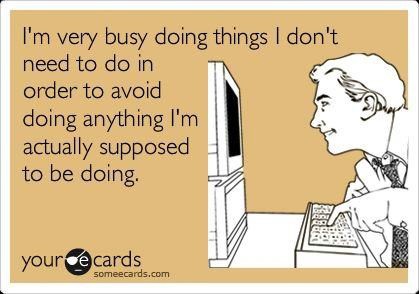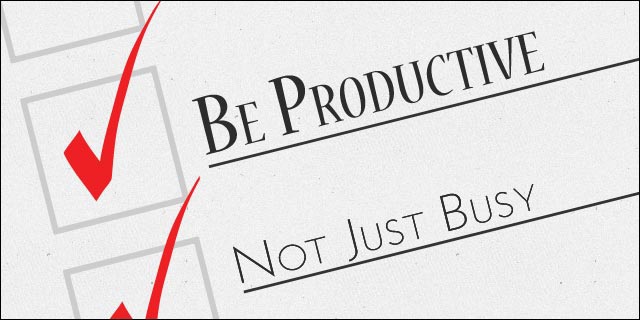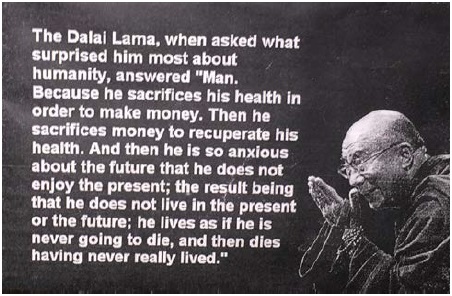
A Coaching Power Tool Created by Vanessa R Mazurek
(Leadership Coach, UNITED STATES)
Recently I attended a Focus group on “Having it All”. The keynote speaker was a business owner who over the last 15 years had built a business from the ground up, starting as a company of one. Today, the individual leads a company of over 400 team members, as well as spearheads multiple new business ventures. This individual spoke about juggling the many aspects of career, family (to include a special needs child), and continued personal and professional development (did I mention the individual is also back in school working on a doctorate?!?). Two of the powerful messages provided during this keynote included the following:
- When asked the question, “how do you do it all?” The individual said “I don’t, I’m just really good at faking it!” and,
- “When constantly juggling so many things, you are going to drop balls. Just make sure they are the ones that bounce.”
Take a moment to ask yourself the following:
We most likely all know someone who is extremely productive, someone who just seems to cross things off of the list, and get things done – things that are meaningful; things that are value-added, and things that have impact.
On the contrary, we may know or even sometimes find ourselves in a state of “busyness”. But when in this state, what are we truly accomplishing? How is it serving us? And what is the impact or value-added?
Application
Let’s look at Jane and Joe. Jane comes to work every day and is often seen walking briskly from one place to the next. She rarely has time to stop and say hello, and is very quick to tell you “I’m so busy”, “I’m not going to have time for that”, or “I can’t” when asked how she’s doing or if she can assist with a task. Jane often finds herself working extra hours just to “keep up”, and because of that overtime, tends to find herself in a resentful state. Her output is somewhat limited, and often received late.
Joe comes to work and puts in his 8-9 hours (but no more than the full 80 within the pay period). He typically allows himself a few extra minutes to get from one meeting to the next, and will often stop in the hall on his way, to say hello. Joe readily volunteers to assist when something is needed, and produces deliverables on time.
Jane and Joe have the same manager, share similar educational and professional backgrounds, and are assigned the same level of work. What is the difference between Jane and Joe? What is the secret – how does Joe get his work done on time every time?
What if the answer lies in how we choose to prioritize in work and in life? That is, we make a conscious choice in how we fill our time, choosing to take on those taskings or activities that are going to have the most impact, those which clearly align to strategic imperatives of the organization in which we work, or with our own values and goals?
Busy
Busy in its adjective form is defined as “having a great deal to do”, while in its verb form, it is defined as “to keep occupied”. Have you found yourself in a situation where it seemed you had too many things on the to-do list? Have you found yourself in a state where you are trying to keep yourself occupied?
In the chaos of today’s world, information coming at us from every which direction, the constant balance of work and family, and the down-sizing that tends to come with economic swings, we often find ourselves trying to do more with less; less time, less resources, and so forth. And what about squeezing in some YOU time? Whether its exercise, hobbies, personal development, or social time with friends; there are so many things that compete for our time and attention. It can be easy to feel as though you are being pulled in a multitude of directions, and easy to lose focus of those things we value and how to best use our time to ensure alignment with our beliefs and goals.
What does busy look and feel like?
 Busy can look and feel like a mess; overwhelming, insurmountable, like there is never enough time in a day, or, as though no matter what you do, you never catch up; like treading water, or just staying afloat. It can manifest in the emotional and physical, to include stress, anxiety, high blood pressure, frustration, pain in certain areas of the body such as the neck or shoulders, and can result in making less healthy choices (i.e., dietary and otherwise).
Busy can look and feel like a mess; overwhelming, insurmountable, like there is never enough time in a day, or, as though no matter what you do, you never catch up; like treading water, or just staying afloat. It can manifest in the emotional and physical, to include stress, anxiety, high blood pressure, frustration, pain in certain areas of the body such as the neck or shoulders, and can result in making less healthy choices (i.e., dietary and otherwise).
Looking at the image above, have you ever found yourself in a similar situation? Where you wished you had more arms, or better yet, more of you all together?!?
Think back to a time when you found yourself juggling multiple things; when you felt several areas of your life competing for attention all at the same time. It may be family, work, household chores such as cooking, cleaning, ensuring the bills get paid on time, etc. What did this feel like?
If you had to rate the level of attention you provided to each area that was simultaneously demanding your time, how would you rate each?
What patterns can you derive from how you rated the attention given to these areas?
Are there areas you wish you had paid more attention to? Areas you wish you had devoted less attention to?
As a bona-fid type “A” personality, I have often found myself in this space. There is never enough time in the day, I power walk from one meeting to the next, I multi-task constantly, and often find myself at the end of the day thinking “what did I actually accomplish today”?

Productive
Productive in its adjective form can be defined as “producing or able to product large amounts of goods, crops, or other commodities” and “achieving or producing a significant amount or result”.
Think back to a time or situation where you felt most productive. What did this feel like? What did it look like? What structures or tools assisted you in achieving this productivity? How might you translate this to other areas of your life?
 I found that I used to work a lot of overtime. Looking back, I realize that had I chosen to focus and work with intent; to tackle priority tasks with that intent, I may not have had the need to work overtime at all. In fact, I could argue that the overtime was used because the sheer sense of feeling overwhelmed or inundated by all of the “busyness”, led to the exact opposite of productivity – it manifested in “analysis paralysis”; not knowing where to start, or how to move forward; perhaps even a state of procrastination (delay). This can result for example, in reading and re-reading an email before finally sending it out, or other examples of indecision, and/or not knowing when ‘good’ is ‘good enough’.
I found that I used to work a lot of overtime. Looking back, I realize that had I chosen to focus and work with intent; to tackle priority tasks with that intent, I may not have had the need to work overtime at all. In fact, I could argue that the overtime was used because the sheer sense of feeling overwhelmed or inundated by all of the “busyness”, led to the exact opposite of productivity – it manifested in “analysis paralysis”; not knowing where to start, or how to move forward; perhaps even a state of procrastination (delay). This can result for example, in reading and re-reading an email before finally sending it out, or other examples of indecision, and/or not knowing when ‘good’ is ‘good enough’.
It is compounded by a lack of focus or intent. For example, the other evening I really just needed to work a handful of small items, but these handful of items were weighing on me, one of which was providing a reply to a colleague. Instead of logging into the social networking site and just sending out the reply, I proceeded to spend over an hour looking at changing and re-sizing my profile picture! “Busy” here, was a façade; something which took up time without any real value or impact. When working to juggle so many things, what are you or have you truly given 100% to? When doing many things at any one given time, you may not be giving key areas in work or life, the attention they warrant.
There are several studies and articles that discuss the correlation between number of hours worked per day and productivity (i.e., that is, the point of diminished returns), as well as number of hours worked and impacts on health.
Much research has also been done in the areas of time management and process improvement. Organizations such as Franklin Covey, who train time management concepts around the globe and perhaps are most notable for Dr. Stephen Covey’s “7 Habits of Highly Effective People” bring forward concepts such as “big rocks”, and scheduling your time around the important things first (the big rocks) versus allowing your days to be filled by ‘stuff’ (small pebbles). Industries also leverage methodologies such as Lean Six Sigma for process improvement initiatives; improving throughput and reducing error rates. The below graphic is a PICK chart, which is a Lean Six Sigma tool that was designed by Lockheed Martin for organizing and categorizing process improvement ideas.
 A PICK chart or similar structure/tool, can help us to readily identify those activities or tasks which are nonessential or critical, those which will have the most impact and are value-added. By focusing on those activities or tasks which are most value-added, we can move into a state of productivity, regaining both time and energy that might otherwise be spent on things that aren’t in alignment with who we are, what we want to be, and where we want to go. This state of productivity and alignment to our beliefs, values, and goals, can lead to a sense of well-being, feelings of calmness, autonomy, and freedom.
A PICK chart or similar structure/tool, can help us to readily identify those activities or tasks which are nonessential or critical, those which will have the most impact and are value-added. By focusing on those activities or tasks which are most value-added, we can move into a state of productivity, regaining both time and energy that might otherwise be spent on things that aren’t in alignment with who we are, what we want to be, and where we want to go. This state of productivity and alignment to our beliefs, values, and goals, can lead to a sense of well-being, feelings of calmness, autonomy, and freedom.
Reflection
Questions for both self and coaching applications include:
- What is keeping you occupied? How is this action serving you?
- What does a productive day look/feel like to you?
- What area of your life would you like to create value?
- Where would you like to make an impact?
- What are you faking? Why? For whom?
- What would it look like for you to move from busy to productive?
- What strategies can you use to maximize your impact/value-added in [x] area of your life?
- What would it look like if you spent the amount of time/energy on [x] that you do on [y]?
- What are you prioritizing in your life?
- What structures do you have to support you in moving to productivity?
- What is keeping you from being productive? What is keeping you in a busy state?
- What self-talk would facilitate moving from busy to productive?
- When it comes to time, what if you already have enough?
- What balls can you let drop? Are they the ones that bounce? What is the worst that could happen if you drop some of the balls?
- What does your PICK chart look like?
- Think back to a time when you were completely yourself; totally unencumbered. How did you feel?

References
(n.d.). Retrieved April 30, 2016, from (n.d.). Retrieved April 30, 2016, from http://thejoyfulorganizer.com/wp-content/uploads/2010/05/ManInMiddleOfPaperStacks.jpg (n.d.). Retrieved May 14, 2016, from https://sully646.files.wordpress.com/2014/06/productive_notbusy.jpg (n.d.). Retrieved May 14, 2016, from http://www.franklincovey.com/ (n.d.). Retrieved May 14, 2016, from http://www.bing.com/search?q=busy&form=IE10TR&src=IE10TR&pc=DCJB
(n.d.). Retrieved May 14, 2016, from http://www.bing.com/search?q=productive&qs=n&form=QBRE&pq=productive&sc=8-10&sp=-1&sk=&cvid=DDF2B6C503F7434CB716410148E30448 n.d.). Retrieved May 14, 2016, from Campion, M. (2015, November 6). Want to mess with people? Tell them you’re not busy! Retrieved April 30, 2016, from http://www.marriagegeek.com/want-to-mess-with-people-tell-them-youre-not-busy/ How Lifestyle Impacts Your Health. (n.d.). Retrieved May 14, 2016, from ‘How Lifestyle Impacts on Your Health’ Brochure.pdf London, C. W. (2014, December 9). Working Hours: Proof that you should get a life. Retrieved April 30, 2016, from http://www.economist.com/blogs/freeexchange/2014/12/working-hours Nguyen, S., Ph.D. (2010, September 18). Busy Work and Fake Work. Retrieved April 30, 2016, from – http://workplacepsychology.net/2010/09/18/busy-work-and-fake-work/ Pick Chart. (n.d.). Retrieved May 14, 2016, from https://en.wikipedia.org/wiki/Pick_chart Vanderkam, L. (2011, June 6). How many hours should you be working? Retrieved April 30, 2016, from http://fortune.com/2011/06/06/how-many-hours-should-you-be-working/ Vital, A. (n.d.). How To Be Productive. Retrieved May 14, 2016, from Wesley, D. (n.d.). How Busy Are Americans. Retrieved April 30, 2016, from http://visualeconomics.creditloan.com/how-busy-are-americans/ Why Working More Than 8 Hours a Day Can Kill You. (n.d.). Retrieved April 30, 2016, from http://www.forbes.com/sites/daviddisalvo/2012/09/12/why-working-more-than-8-hours-a-day-can-kill-you/#1aae30d56509)